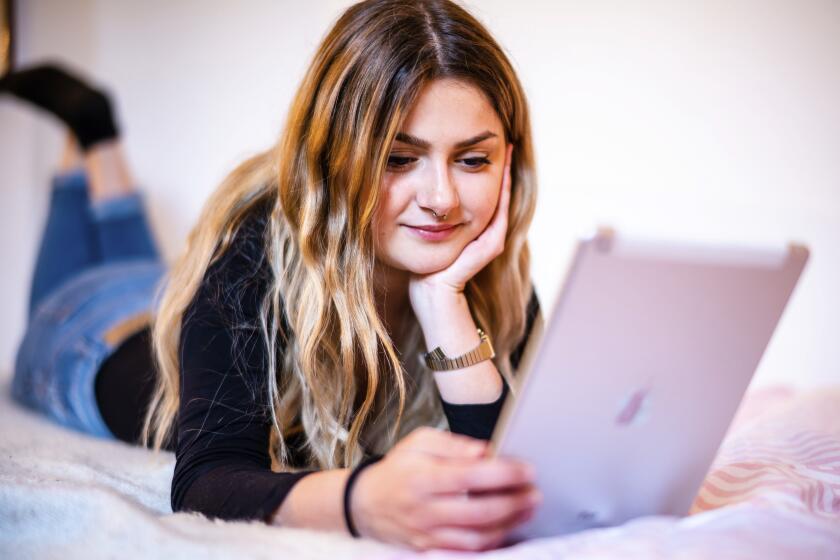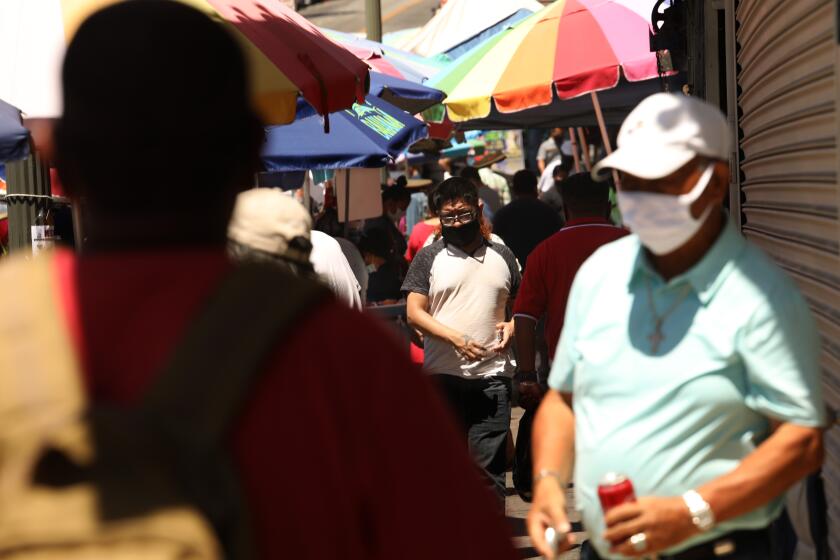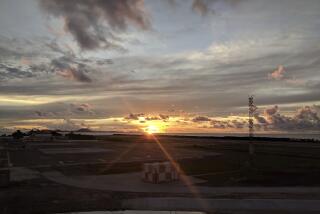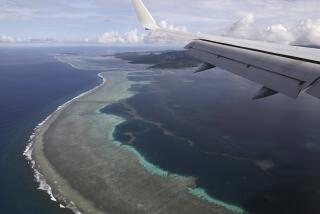Despite infected visitors, ‘hugging and kissing,’ how did this Italian island avoid a coronavirus outbreak?
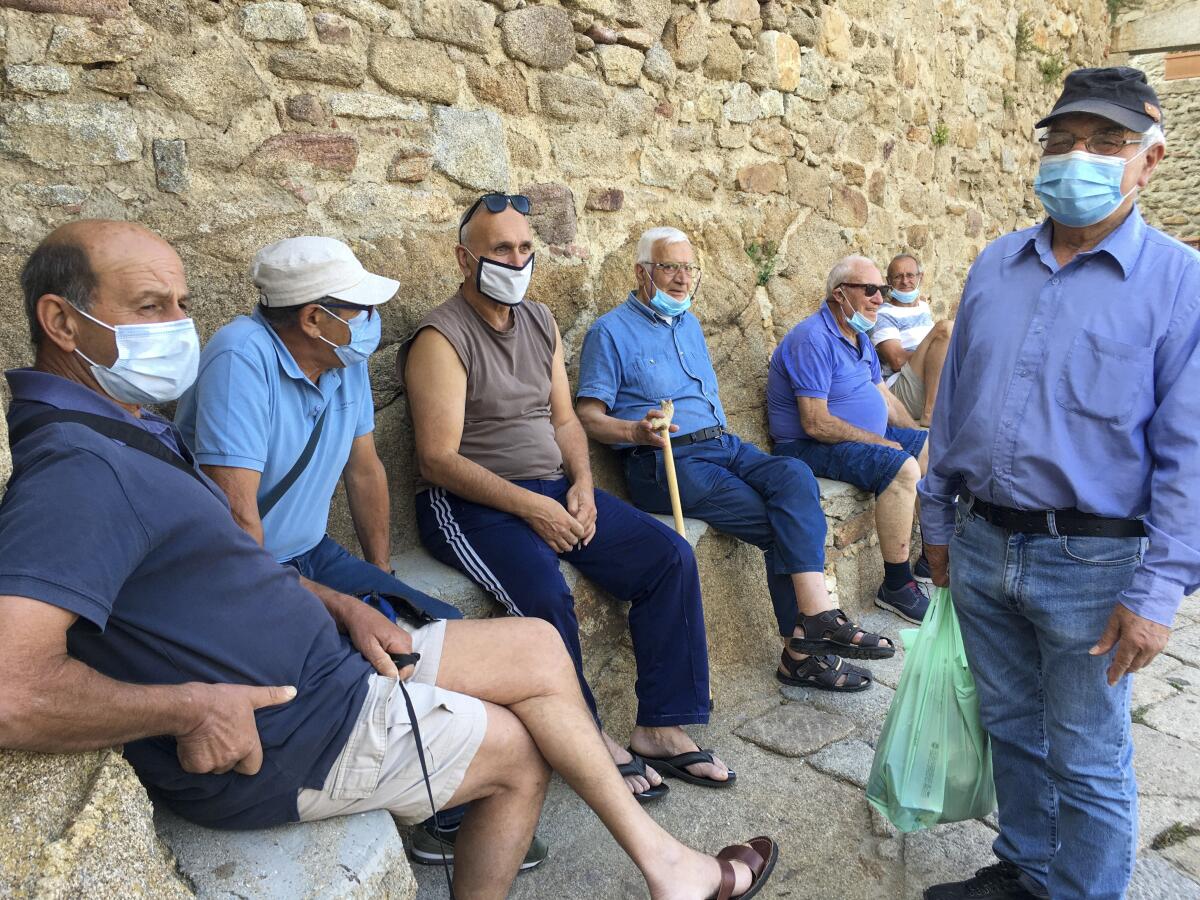
- Share via
GIGLIO ISLAND, Italy — Stranded on a tiny Italian island, a cancer researcher grew increasingly alarmed to hear that one, then three more visitors had fallen ill with COVID-19.
Paola Muti braced for a rapid spread of the coronavirus to the rest of the population of 800 closely knit islanders, many of whom she knows well. Her mother was born on Giglio Island, and she often stays at the family home, with its charming view of the sea through the parlor’s windows.
But days passed, and none of Giglio’s islanders developed any COVID-19 symptoms, even though the conditions seemed favorable for the disease to spread like wildfire. The Gigliesi, as the residents are known, like socializing in the steep alleys near the port or on the granite steps that serve as narrow streets in the hilltop Castle neighborhood, with densely packed homes built against the remnants of a fortress erected centuries ago to protect against pirates.
Dr. Armando Schiaffino, the island’s sole physician for about 40 years, shared Muti’s worry that there would be a local outbreak.
“Every time an ordinary childhood illness, like scarlet fever, measles or chicken pox strikes, within a very few days practically all get [it],” he said in an interview in his office near the port.
But not this time. Muti, a breast cancer researcher at the University of Milan, where she is an epidemiology professor, decided to try to find out why.
One of the biggest challenges in trying to contain the coronavirus is that an unknown number of people are spreading it when they don’t even seem sick themselves.
Were residents infected but didn’t show symptoms? Was something genetic preventing infection? Something else? Or just plain luck?
“Dr. Schiaffino came to me and told me, ‘Hey, look, Paola, this is incredible. In this full pandemic, with all the cases that came to the island, nobody is sick.’ So I said to myself: ‘Right, here we can do a study, no? I am here,’” Muti said.
By then, Muti was trapped on the island by Italy’s strict lockdown rules. What was especially puzzling to her was that many of the islanders had had close contact with the visitors.
Giglio’s first known COVID-19 case was a man in his 60s who arrived Feb. 18 — a couple of days before Italy’s first “native case” would be diagnosed in the country’s north. The man came to Giglio Island for a relative’s funeral, and was “coughing all the way” through the service, Muti said.
When the government said it would begin relaxing its coronavirus lockdown, Italians reached for their dictionaries.
The coronavirus is mainly spread through droplets when someone coughs, sneezes or talks.
The Rev. Lorenzo Pasquotti, the priest who conducted the service for around 50 mourners, recalled: “After the funeral, there were greetings, hugging and kissing,” as is the custom. Then came the procession to the cemetery, where “there were more hugs and kisses.”
The infected man headed back to the mainland on the ferry the same day and died three weeks later in a hospital.
On March 5, four days before the national lockdown was declared, three more visitors came from the mainland and would test positive on the island. One of them was a German man from northern Italy, the initial epicenter of Europe’s outbreak. He socialized for several days with longtime friends in Giglio, including in public eateries. After a week, because a bad cough, he was tested on the island and the result was positive. He self-isolated in a house on Giglio.
There were other known cases, including an islander who had lived in Australia for two years before slipping back onto Giglio in mid-March during lockdown to see his parents. Three days after arriving on Giglio, he developed a mild fever and tested positive, Muti said. He self-isolated at his parents’ home.
‘The Mafia is always ready to intervene in moments of opportunity,’ one prosecutor said.
But no other case has surfaced on Giglio, including since lockdown was lifted in early June, and tourists from throughout Italy have been arriving.
Giglio is part of Tuscany, and its health office quickly sent over kits to test for antibodies to see if others may have had COVID-19. In late April, just before the first lockdown travel restrictions were eased, the islanders had their blood tested, lining up outside the island’s school and doctor’s office.
Of the 800 or so year-round residents, 723 volunteered to be tested.
“We all wanted to do it, to be tranquil” about any possible infection, but also “to help science,” said Simone Madaro, who had been working at the cemetery where the first known infected visitor had gathered with fellow mourners.
Of the islanders tested, only one was found to have antibodies, an elderly Gigliese man who had sailed on the same ferry to the island with the German visitor, Muti said.
Intrigued about why “the virus didn’t seem to interact” with the island’s native population, Muti hadn’t reached any conclusions by the time she was preparing to leave the island this month. She plans to write up her study for eventual publication.
It’s possible, Muti said, that islanders weren’t exposed to enough COVID-19 to get infected.
That possibility was also voiced by Massimo Andreoni, head of infectious diseases at Rome’s Tor Vergata hospital. He noted that some patients are simply less capable of spreading the disease for reasons that are still unclear.
Skeptics say: Why wear masks if they don’t filter out all coronavirus? Scientists say: Because it could mean less severe illness.
Chance might also have played a role, said Daniel Altmann, a professor of immunology at Imperial College London. “It could be something more or less trivial — nobody got infected because through good luck there was little contact,” he said in an email exchange.
Or “it could be something important and exotic,” Altmann also noted, such as a genetic variant common among the island’s population.
With many of the Gigliesi intermarrying through generations, Muti would like to do a genetic study someday if she can obtain funding.
Giglio lies in pristine waters in a protected regional marine sanctuary, a natural environment that islanders like to think is good for their health, whatever Muti’s study might determine.
“As an island, as the environment goes, we’re OK, no?” said Domenico Pignatelli, as the elderly man kept company with friends in chairs placed on a stony street atop Giglio.
More to Read
Sign up for Essential California
The most important California stories and recommendations in your inbox every morning.
You may occasionally receive promotional content from the Los Angeles Times.
